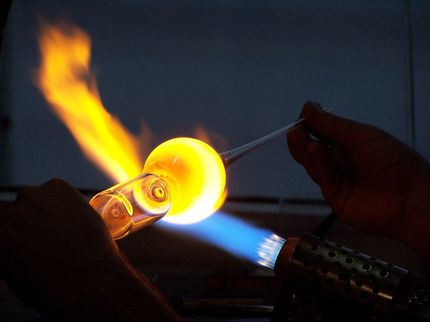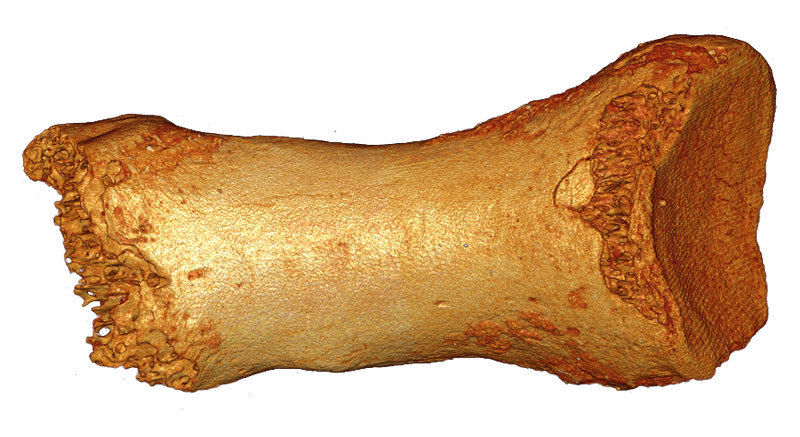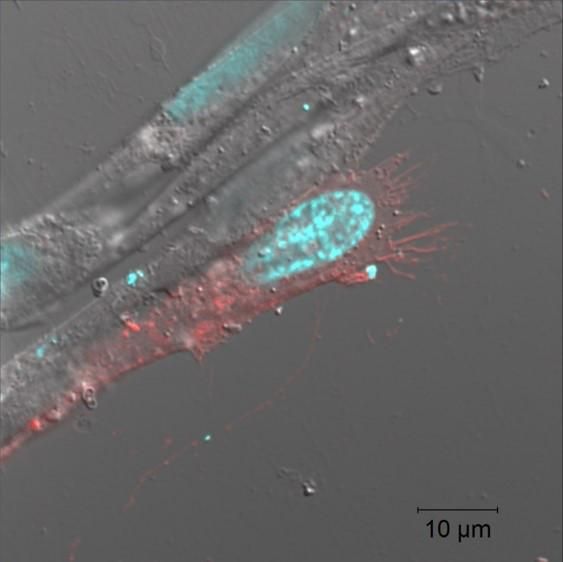X-rays reveal how glasses lose their stability
PETRA III experiment shows how atoms in glass behave as weaknesses appear
Is glass solid or liquid? There is a popular misconception that old glass, which is often thicker at the bottom than at the top (such as stained-glass windows from cathedrals), flows downwards over time because it is actually an extremely viscous liquid. To a certain extent, this is true, glass flows extremely slowly, but it is a state somewhere in between solid and liquid. Researchers from Italy and Belgium have teamed with DESY scientists at PETRA III to uncover secrets behind the stability of glass. To accomplish this, they studied the movement of atoms in glass as they introduced deformities to the glass. The results have been published in the journal Physical Review X.
Glasses are interesting substances –they are often transparent and appear to be solids, but they lack a major property of solids. That property is crystallisation, the building of repeating ordered structures of atoms that are classic in solid materials. Glasses are instead disordered: their atoms maintain no regular pattern, which is similar to a liquid state, but they are stable enough to show the qualities of a solid. These differences at the atomic scale enable characteristics to appear that are much different from those of solids of the same material. In the case of silica glass, the glass we most commonly use in everyday life, it has the same mechanical and optical properties in every direction and has a relatively light weight compared to its volume. Additionally, in recent studies performed at DESY, the same Italian–Belgian team found that the atoms of the glass can undergo what is called “stochastic acceleration”, meaning that they can jump from one area of the material to another when exposed to X-rays.
In the current study, the team evaluated how this motion occurred in connection to changes in the stability of the glass. In fact, when glasses are stretched by a small amount, the position of most of the atoms changes in a manner similar to that of solids, and the atoms move back into place when the deformation ends. However, even for the smallest stretching possible, some atoms do not move back into place when the deformation ends – meaning that glass is always somewhat “plastic” in its behaviour. The tendency of glasses to behave plastically becomes more and more evident for larger stretching but also when glass receives X-rays, as both actions tend to weaken the glass. Yet how exactly these weaknesses manifested is still under discussion. The team wanted to examine how this plasticity occurs and how this scenario relates to the atomic accelerations they had previously witnessed. “Using X-rays produced by the beamline P10 of PETRA III, we examined glasses similar to those used in windows. As X-rays induce weaknesses in the glass similar to physical changes that make glasses more plastic, we could monitor the atomic changes in the glass in-situ,” says Michael Sprung.
Their main takeaway: the previously observed stochastic accelerations take place, and they displace other nearby atoms along the way up to the point of failure. These changes are what produce the classic weaknesses that makes glasses yield.
“An example would be a stone thrown into a pond: the point of impact is clearly the centre of perturbation (in our case, the point where the X-rays are absorbed), but the waves propagate throughout the pond, with the smaller the effect the greater the distance from the point of impact,” says Alessandro Martinelli, the first author of the study. “The same happens in our glass, where the effect of these defects is felt throughout the material.”
As the glass is exposed to the X-rays, it undergoes several changes. First, its atoms jump back and forth like springs, meaning the glass is behaving elastically and more like a solid. But as these motions get larger, the atoms begin to move in greater distances, and then they begin to move without returning to their original locations, displacing other atoms along the way. This is the point of transition from solid glass to a glass with high plasticity. This is the first time this process has been observed at the atomic scale.
“Studying the failure point in oxide glass is very difficult experimentally because glass usually shatters at that point,” says Giulio Monaco, a professor of physics at the University of Padua who led the study. “By using X-rays, however, it is possible to circumvent this problem, and to study with atomic resolution what cannot be done with classical laboratory techniques, for example in traction. This study is the first case of reaching the failure point by X-ray irradiation, where the transition from an elastic solid to a plastic solid is observed.”
The results of this study could lead the way to more controlled changes in the properties of glasses, with a variety of potential industrial applications possible. The research involved scientists from the University of Padua, the University of Trento, the University of Brussels, and DESY.



























































